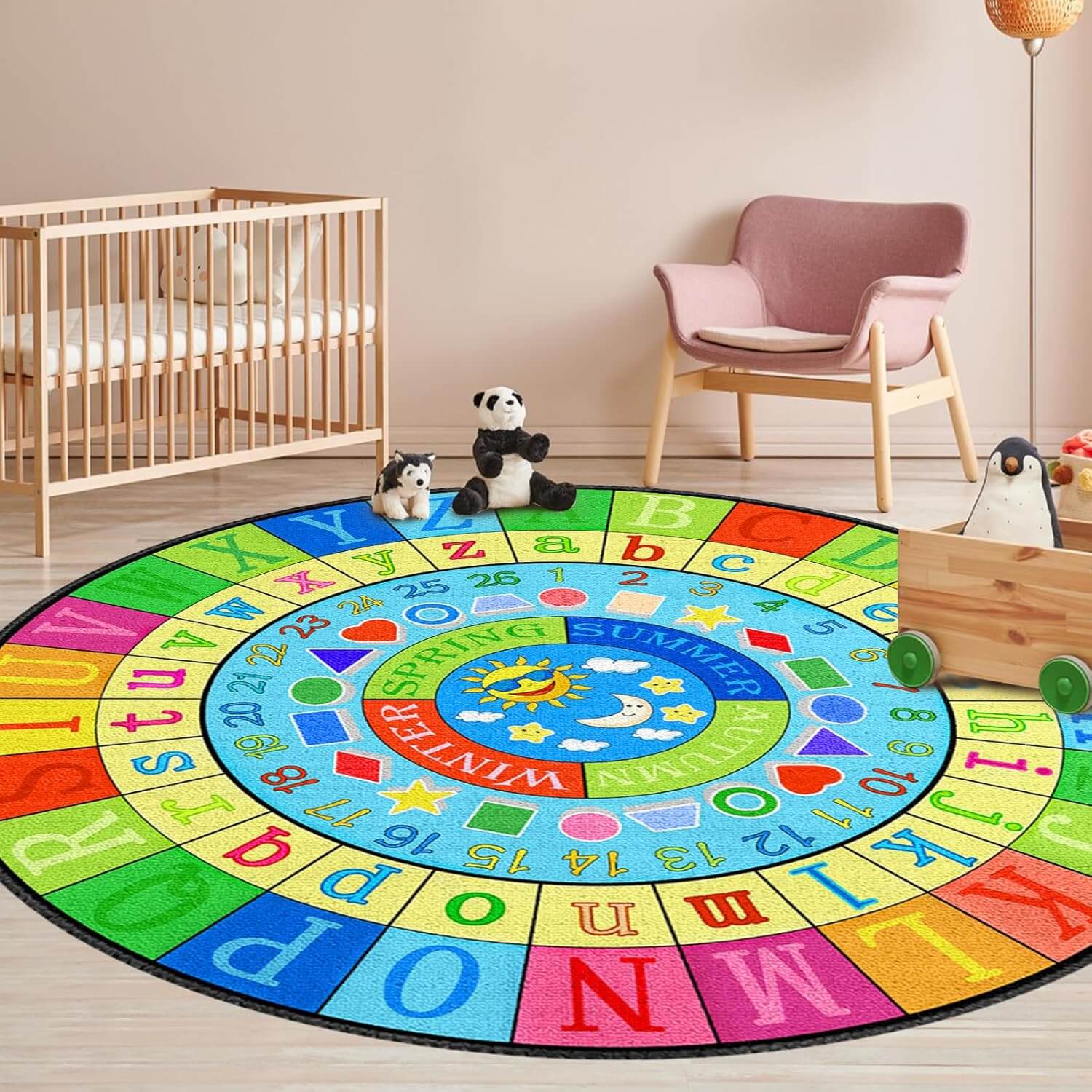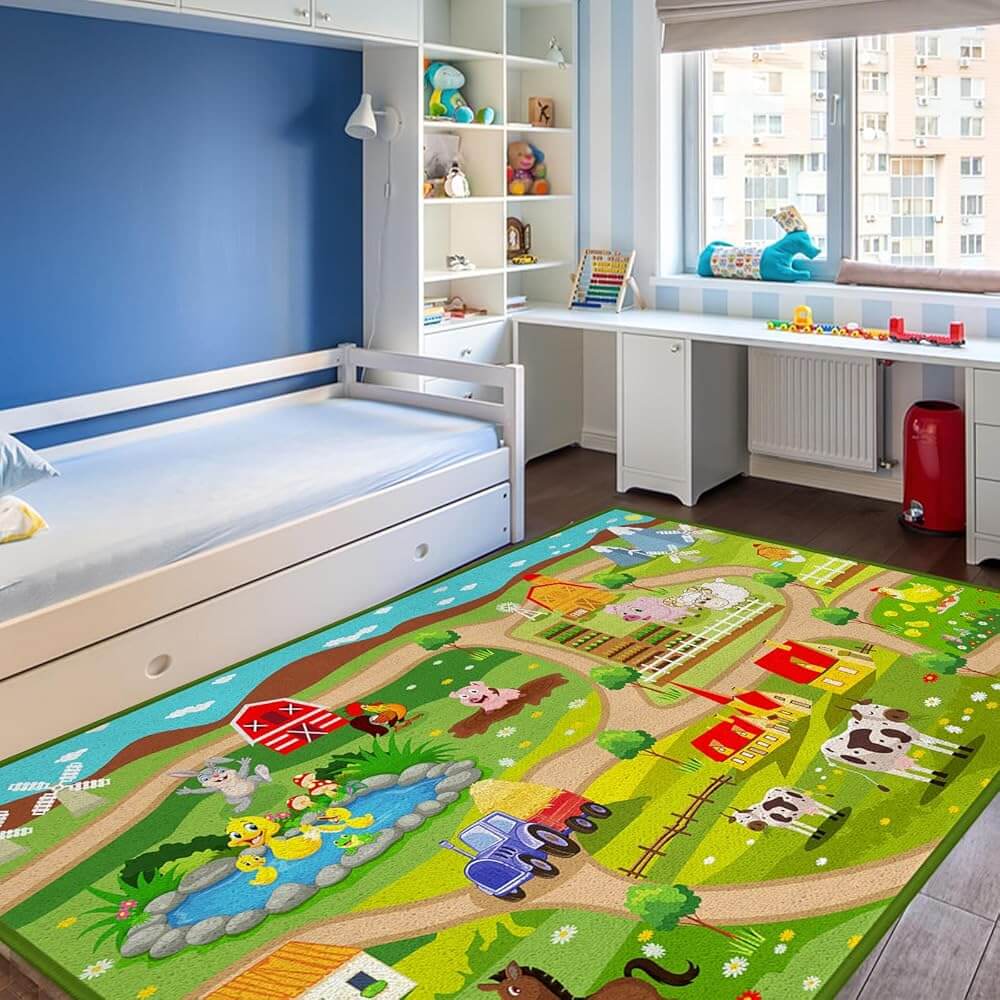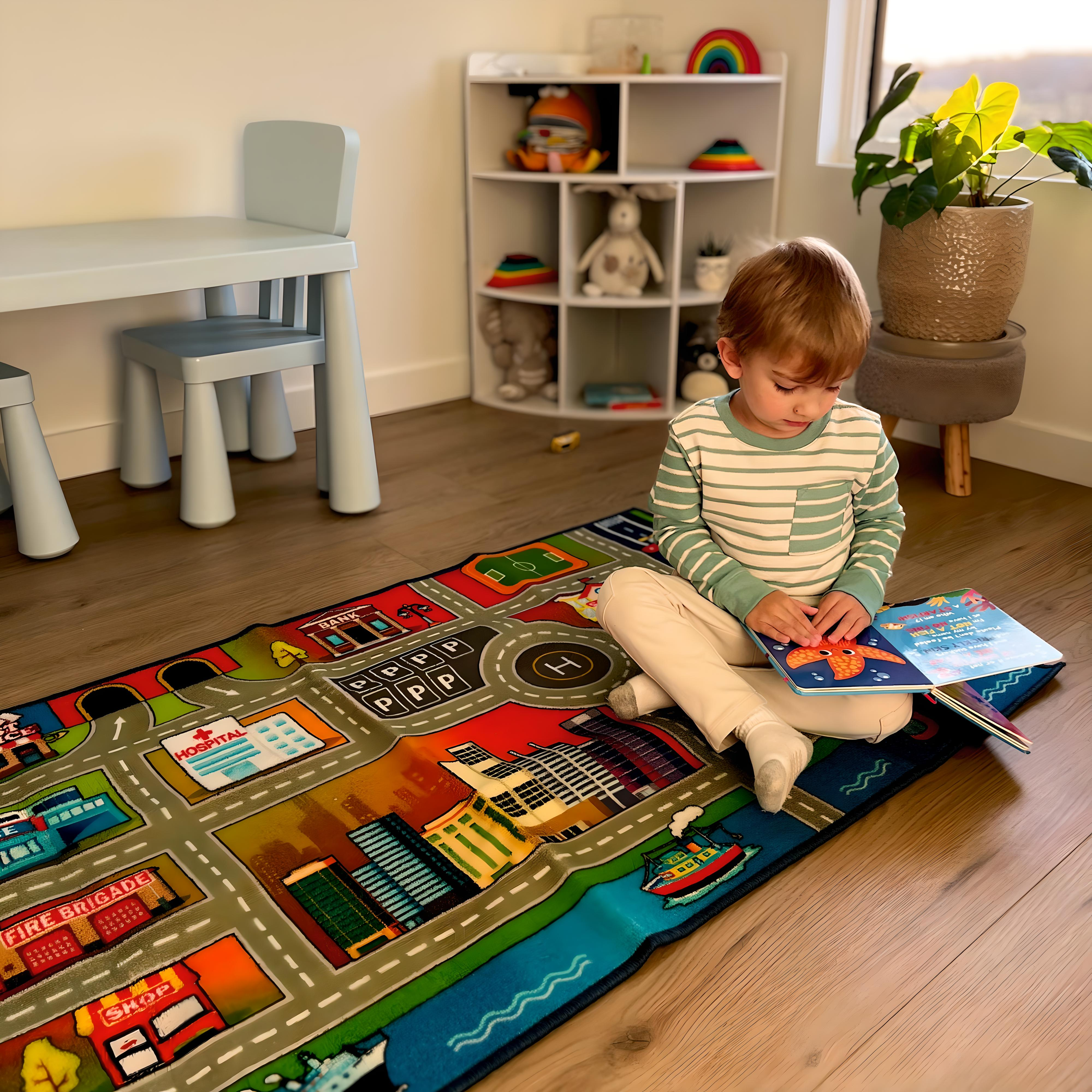Hey there, classroom decorating dynamos! Let's talk about something that'll make your teacher-heart skip a beat: those gorgeous floors beneath your students' feet might be your secret weapon for boosting motivation! Who knew, right?
You've probably seen all the buzz about "dopamine dressing" taking over your social feeds – ya know, wearing those bold, happy colors that give your brain a little chemical high? Well, hold onto your lesson plans, because this same concept is revolutionizing classroom design through what I'm calling "dopamine carpeting" – and the results are MIND-BLOWING!
The Science Behind the Happiest Floors in School
So what's the deal with dopamine anyway? According to Wikipedia's explanation of dopamine's role in learning, this nifty little neurotransmitter is basically your brain's "reward chemical." It lights up when something good happens, making you feel all warm and fuzzy inside.
Here's the kicker – research shows that certain visual patterns and colors can actually trigger dopamine release! According to Edutopia's research on learning environments, strategic visual stimuli can boost student motivation by up to 28% (that's nearly a third, math teachers!) by activating the brain's reward pathways.
One third-grade teacher in Atlanta told me: "After switching to our new geometric-patterned rug, my reluctant writers went from producing two sentences to full paragraphs. Same kids, same lesson plans – different floor!"
What Makes a Rug Dopamine-Friendly?
Not all classroom rugs are created equal in the motivation department. The dopamine-triggering patterns that have teachers raving share some specific characteristics:
1. Strategic Color Psychology
Colors aren't just pretty – they're powerful brain manipulators! According to Color Matters design psychology blog, certain hues affect us at a neurological level:
- Blues and Greens: Create a sense of accomplishment and focus (perfect for independent work areas)
- Pops of Yellow: Trigger optimism and energy (ideal for creative stations)
- Balanced Red Accents: Increase alertness and attention (great for instruction spaces)
The most effective motivation-boosting classroom rugs feature a calming base with strategic pops of energizing colors – like the bestselling Motivation Mountain design at Boooom Jackson that teachers can't stop raving about!
2. Completion-Based Patterns
Our brains LOVE seeing patterns complete – it's like a built-in reward system! The most motivational floor designs feature:
- Circular Patterns: Research from Scholastic's Teacher Blog shows that circular designs create a sense of completeness that satisfies the brain's desire for closure.
- Progressive Designs: Patterns that build or progress toward a "finish" subtly encourage persistence.
- Achievement Pathways: Designs that create natural "roads" or "journeys" tap into our innate desire to reach destinations.
One kindergarten teacher in Texas shared: "Our new pathway rug has cut transition time in HALF. The kids literally follow the pattern to their next station without me saying a word. It's like magic!"
3. Goldilocks Complexity
This is where the science gets super fascinating, y'all! According to Educational Leadership magazine, there's a "just right" level of visual complexity that stimulates without overwhelming developing brains:
- Too simple: Solid colored rugs don't provide enough visual interest to trigger dopamine.
- Too busy: Overly complex patterns create cognitive overload and actually shut down motivation.
- Just right: Moderate complexity with clear organization provides the perfect dopamine boost.
The sweet spot? Patterns complex enough to be interesting but organized enough to feel satisfying. Think about it like chocolate chip cookies – you want enough chips to be exciting, but not so many that you can't taste the cookie!
Real Classroom Transformations (That'll Make You a Believer!)
Teachers across the country are seeing REAL results after implementing dopamine-friendly carpet designs:
Ms. Rodriguez's Reading Revolution
After installing a circular progress-pattern rug from Boooom Jackson in her reading corner, this second-grade teacher tracked a 34% increase in voluntary reading time. "The kids gravitate to that corner now," she shared. "They say they 'feel good' sitting on the special rug. That's dopamine talking!"
Mr. Thompson's Math Motivation Miracle
This middle school math teacher created designated "problem-solving pods" using small dopamine-friendly carpet sections. The results? "Engagement in our challenge problems went through the roof. Something about those vibrant circular patterns makes struggling through tough problems more appealing!"
The Special Ed Success Story
Perhaps most impressive was the transformation in Ms. Patel's special education classroom. After introducing stratégically patterned rugs for different activity centers, she documented a 46% decrease in transition resistance and a 29% increase in task completion. "For my students with motivation challenges, these carpets have been legitimate game-changers."
DIY Dopamine Design: Working With What You've Got
Not ready to invest in completely new classroom rugs? No worries, friend! Try these budget-friendly dopamine design hacks:
- Strategic Overlays: Place smaller reward-system classroom aesthetics rugs over existing carpeting in key learning areas.
- Direction Define-rs: Use colorful tape to create dopamine-triggering pathways on existing flooring.
- Motivation Stations: Create small "reward centers" with inexpensive but visually stimulating carpet squares.
- Progress Trackers: Add visual journey elements around the perimeter of existing rugs.
One creative pre-K teacher in Ohio used colorful bathmats to create "dopamine islands" throughout her classroom. "Cost me $40 total at the home store, but revolutionized our center rotation engagement!"
Implementation That Actually Works
Ready to boost your classroom's motivation factor through strategic flooring? Here's your game plan:
1. Map Your Motivation Needs
Start by identifying where motivation typically lags in your classroom:
- Morning meeting engagement?
- Transition times?
- Independent work persistence?
- Clean-up participation?
Each motivation challenge might benefit from different dopamine-triggering designs!
2. Consider Your Classroom Community
Different age groups and learning needs respond to different types of visual stimulation:
- Younger children: More defined pathways and clearer visual cues
- Older students: More subtle patterns with sophisticated color psychology
- Diverse learners: Strategic combination of calming bases with engaging accents
3. Start Small and Measure Impact
Rather than overhauling your entire classroom at once, try introducing one dopamine-friendly rug in your most challenging area. Track engagement and motivation metrics before and after to see the real impact.
As one fifth-grade teacher shared: "I was skeptical until I tried a small motivation rug in our writing center. Within a week, word count in journal entries doubled. I was sold!"
The Science-Meets-Style Shopping Guide
When you're ready to invest in motivation-boosting classroom rugs, keep these criteria in mind:
- Commercial-grade durability: Excited, motivated students are active students!
- Low pile height: Ensures accessibility for all mobility levels
- Stain resistance: Because motivation sometimes involves messy enthusiasm
- Brain-friendly patterns: Look for those circular, progressive, or pathway designs
- Strategic color psychology: Base of blues/greens with engaging accent colors
For classroom rugs that check ALL these boxes (and are teacher-approved for dopamine design), check out the collection at Boooom Jackson. Their motivation-centered patterns are designed specifically with brain science in mind!
Beyond the Floor: Creating a Complete Dopamine Environment
The most successful teachers aren't stopping at carpet – they're creating cohesive dopamine-triggering environments:
- Vertical Visuals: Wall displays that complement and extend rug patterns
- Color Coordination: Supply caddies and learning tools that match carpet accents
- Progress Markers: Physical movement through carpet patterns to track achievement
- Celebration Spots: Designated rug areas for recognizing accomplishments
According to Educational Neuroscience Journal, this multi-sensory approach to motivation design creates stronger neural pathways for engagement and persistence.
The Bottom Line: These Aren't Just Pretty Floors!
Y'all, I was skeptical too when I first heard about "dopamine carpeting" – it sounded too good to be true! But the science is solid, and the classroom results are undeniable. Strategic patterns and colors in your floor coverings aren't just pretty design choices – they're legitimate brain science tools!
As one principal noted after seeing the transformation across multiple classrooms: "We invested in new carpet designs and gained something priceless – engaged, motivated learners who actually want to participate."
Ready to give your students' brains (and your teaching sanity) a boost? Check out Boooom Jackson's collection of motivation-boosting classroom rugs and join the thousands of teachers discovering the power of dopamine design!




Leave a comment
This site is protected by hCaptcha and the hCaptcha Privacy Policy and Terms of Service apply.